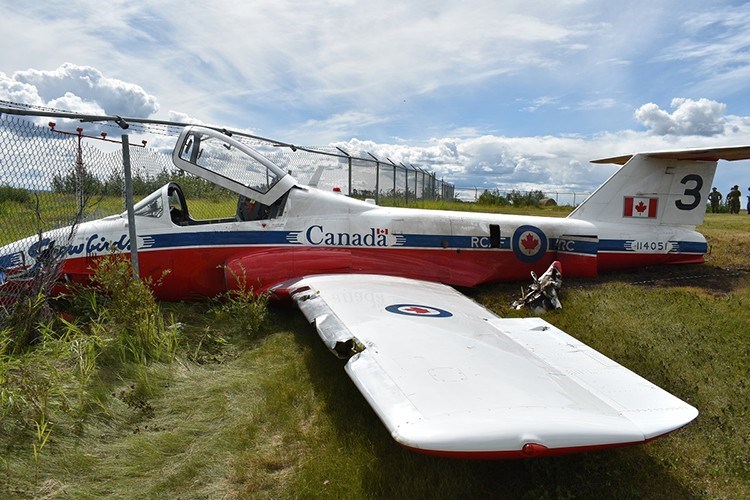An improperly assembled oil filter is the main reason a Snowbirds’ engine failed during a performance in July, an investigation by the Royal Canadian Air Force (RCAF) has revealed.
The aircraft in question was one of nine CT-144 Tutor planes with 431 Air Demonstration Squadron stationed at the airport in Fort St. John, British Columbia, in support of the international air show there on July 30-31, the report explained. Two days after the airshow, the squadron was to ferry the plane from that community back to Moose Jaw on a standard IFR transit flight.
The pilot of the affected plane was the only occupant on board, while the aircraft was not in formation when it crashed.
The morning of the accident, the pilot conducted a routine series of pre-flight checks before proceeding to the active runway for a standard departure, the report said. Shortly after liftoff, the pilot confirmed a positive rate of climb and pressed the landing gear up button.
“Immediately after gear selection, the pilot heard a loud noise and the engine failed. The aircraft rapidly started decelerating and descending back to the runway,” the report continued.
The pilot pressed the button to lower the landing gear and chose to land the aircraft straight ahead, but the landing gear did not have time to fully lower into the locked-down position. The aircraft touched down with about 150 metres (500 feet) of runway remaining.
The unlocked landing gear collapsed under the plane’s weight and the aircraft skidded off the departure end of the runway, the report said. After about 300 metres (1,000 feet) of travel, the plane hit the airport perimeter fence at low speed and came to a rest. The pilot shut down the engine and immediately left the plane.
The aircraft sustained serious damage while the pilot was uninjured.
“The engine failure was due to an improperly assembled oil filer,” the report added. “The investigation is now analyzing the human factors that may have contributed to this occurrence.”




